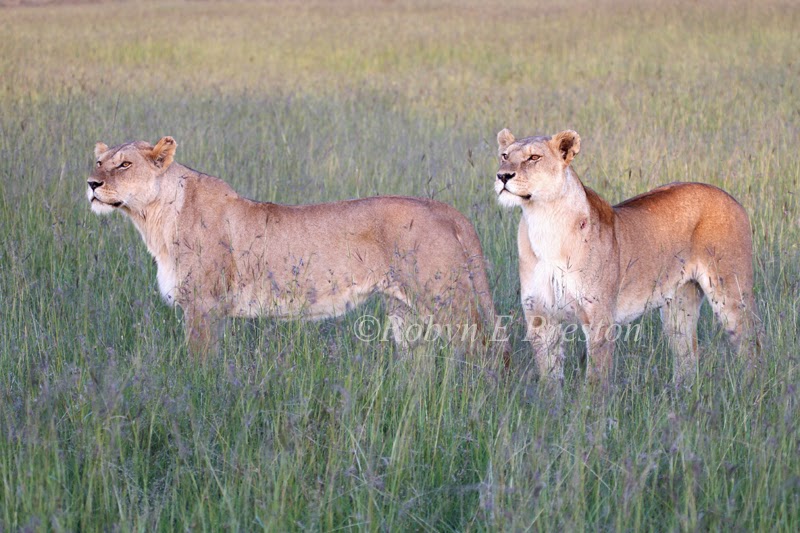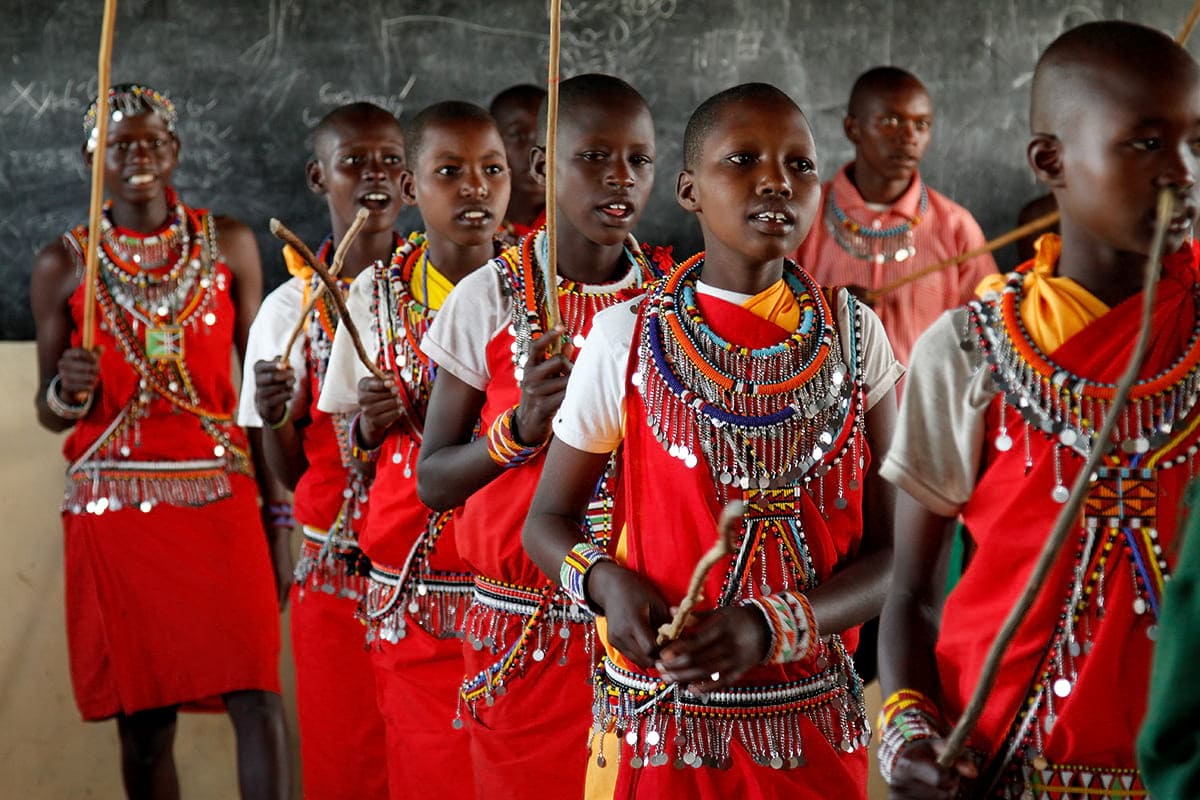I had been looking for some time for a volunteer program in Kenya that focused on the Big Cats in particular. I had done a volunteer program in 2010 in South Africa for two weeks and really enjoyed the experience. But my heart is with the cats. I eventually found the Maasai Mara Big Cat Monitoring and Wildlife Conservation Project which comes under the umbrella of African Impact. It is based in the Naboisho Conservancy of the Maasai Mara eco-system. I signed up for six weeks!
The road in to the camp is rugged ! Lots of rocks and stones and makes for a slow journey from Nkoilale township. I arrive early and have to wait while the management goes back to town to pick up the new intake of volunteers. There’s only three of us in this intake, plus the staff . When they arrive we get a briefing tour of our facilities. For anyone used to fancy hotels, this is not the life for you. This is the bush. It’s primal Africa. It’s back to nature.
The camp has no fences so the wild animals are free to come and go….and they do! Facilities are basic. The rooms are made of stone which soak up the daytime sun and stay cosy at night. The main room is open with no doors or windows.
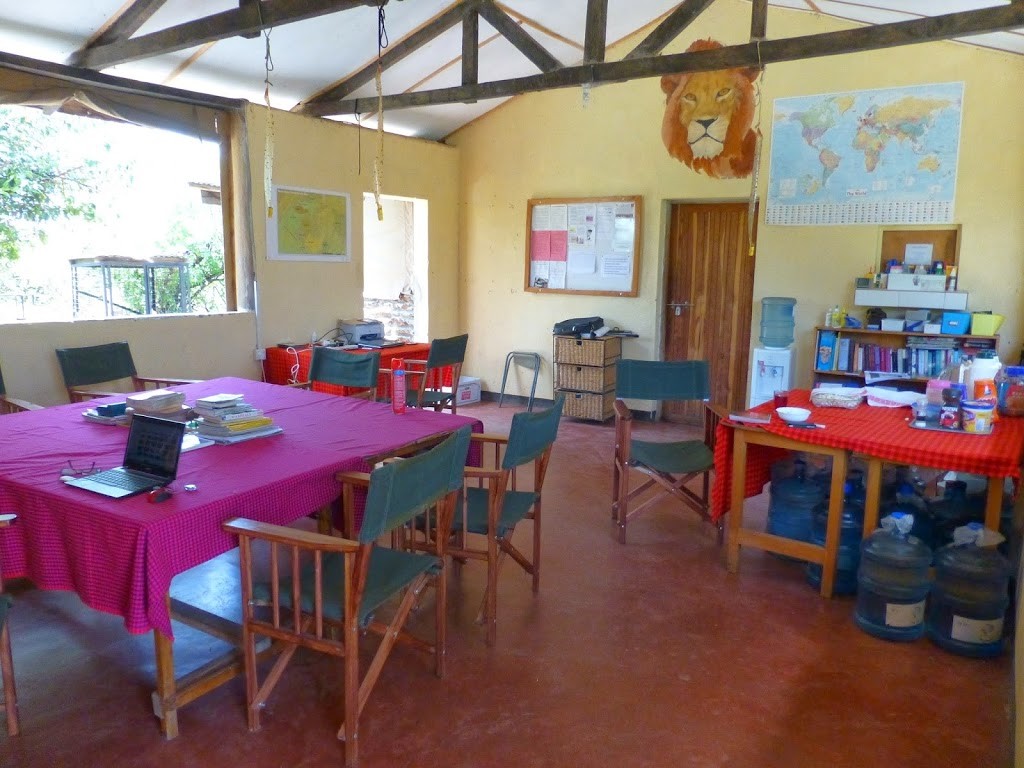
There are drop-down canvasses to shield the wind in this room when needed. There are two showers with wooden grates on the floor and two long drop toilets!! The ablution block is separate to the other buildings. On the outside wall is a hand basin and mirror. The basin is invariably full of huge bugs each morning which are attracted by the outside light. The light is always left on during the night. The water in the showers is heated from a furnace which is lit in the late afternoon. If you go to the shower too early, the water is cold and, if you go too late , same thing. Timing is all important unless you like cold water. And on stinking hot days that isn’t such a bad idea.
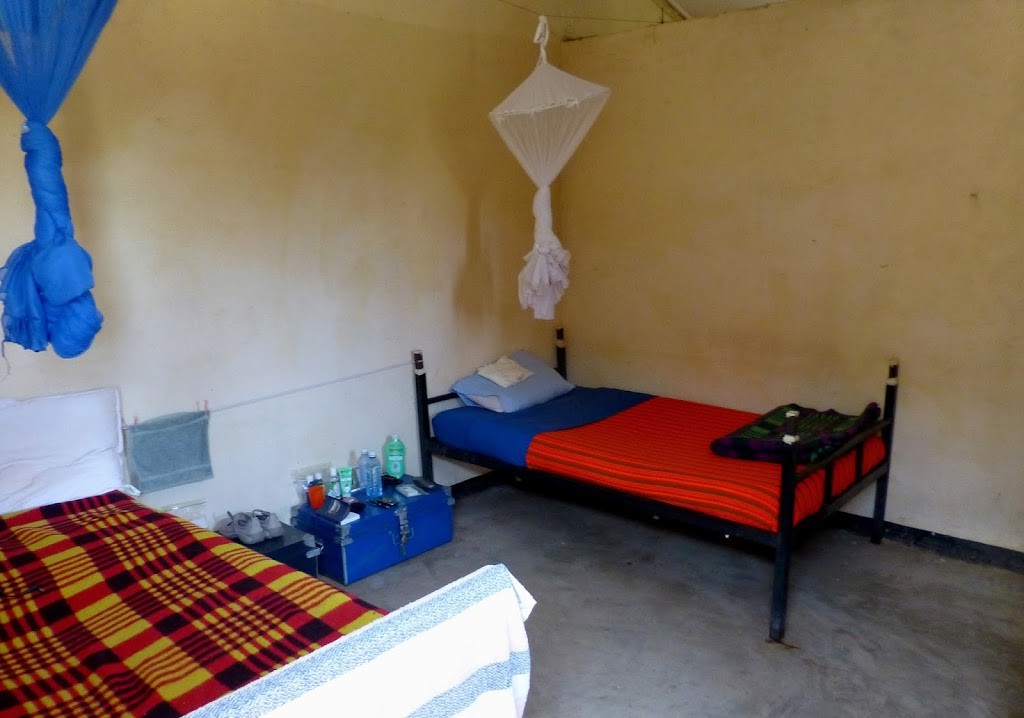
Food supplies are brought in with each volunteer intake and our cook, Vincent, must make good calculations. Vincent’s a busy and accommodating man who always does more than is asked. He tells me his mother taught him to cook and he’s good at it too. Lincoln is manager and takes care of the running of the camp and tries to sort issues that arise. The gorgeous Lucy oversees the place when Lincoln goes away , and also accompanies us on game drives. Soyila is in charge of our laundry and always walks around singing….she’s known for it.
The Lion Project is run by Danish born Niels Mogensen . And we, as volunteers, will collect and collate data on the lions within the Naboisho Conservancy for his ongoing conservation studies. Where these lions are, what their behaviour is, pride numbers and relationships are all things of interest re conserving this species.
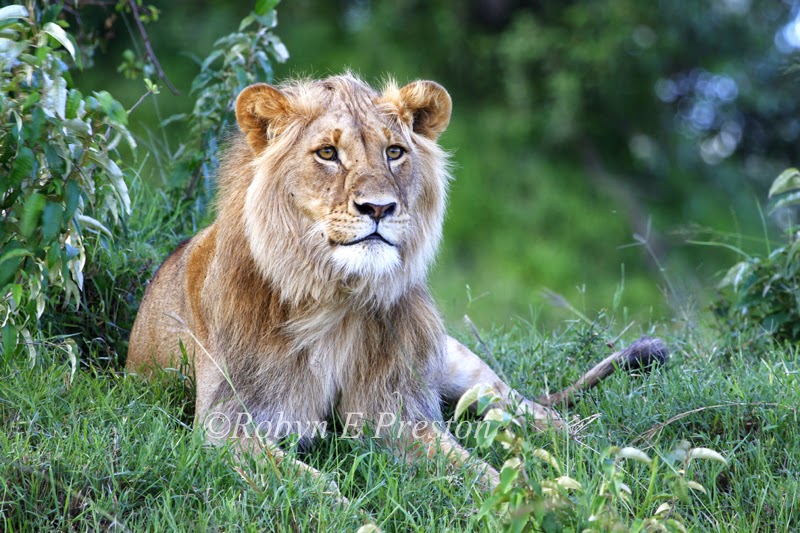
While our main focus is lion and elephant monitoring, there are, of course, lots of other species co-existing here. And our game drives will treat us to all of them if we are lucky.
A few metres from where we are staying is the Koiyaki Guiding School where young maasai men and women come to learn how to be safari guides. Each Monday and Wednesday we will prepare an exercise for their morning lesson….be it quiz, poster drawing, debate, dvd watching relative to studies or whatever we choose. It’s also a time for us to learn about their culture and ways of life. What a lovely bunch of young adults they are too. Always so polite and friendly and very willing to learn. And very competitive.

Our first afternoon at camp and at 4 o’clock it’s pile into the 4×4 (very necessary here) , cameras in hand, to go find the wildlife. We find three lions at a giraffe carcass with a hyena competing for the spoils. We are told the giraffe died while giving birth. There’s plains game too and, by the time our drive is over and we get back to camp, it’s dark. Vincent has dinner ready. It’s chat time then shower and bed. We are advised not to go to the ablution block once it’s dark because of wild animals lurking so being organised prior will be something to be worked on.
There’s a general itinerary for each day and, for the most part, it is adhered to. But it’s also flexible. Tuesday and Thursday mornings are spent doing animal counts in appointed transects. On these mornings we are up early and gone by 7am after a quick cuppa. We can fit in four transects before breakfast usually but that depends on how far we need to travel. And bear in mind the rocky roads. That means breakfast is somewhere between 9 and 10am. Then it’s off again to finish the count before lunch. This exercise involves counting all animals and species within these given transects and recording the data. This, over time, gives an indication of animal movement and numbers.

From lunch time until 4pm no game drives are done because of the heat and the animals tend to hide. So other activities are undertaken. Data is updated into the computer. We also learn about the ways of identifying specific lions and elephants…about notches in ears and whisker spots.
One afternoon we are invited to Nkoilale Primary School where there will be a womens outreach meeting. Walking through the door we are met with a sea of maasai faces. These women are dressed in their familiar bright clothing and conversation is bustling between them. We sit at a table in the corner and are introduced to four medical practice women from Nairobi. The topic today is Female Genital Mutilation (FGM) and the chief speaker holds a perspex model to demonstrate the different ways this is done. It’s a practice that is outlawed in Kenya but still happens if a family thinks they can get away with it. The decision to do FGM is made by the father for his daughter, usually around the age of fourteen. The talk is done in the maa language ( spoken by the maasai people) so we don’t understand the words. But looking at the model and different options it’s obvious. I do, however, ask one of the medical people to expand on the information. I ask her how many of the women in this room would have had this done to them and she informs me “All of them. Including half of the school girls standing at the back of the room”. She, herself, has had it done .The purpose of this talk is to try and discourage the practice. I think this room should have been full of men, not women , as I’m sure the women would be more than happy not to participate in this mutilation of their bodies.
Following this we are taken into another room and the young girls join us. Apparently the older women are being talked to about a subject that the young girls are not permitted to be a part of. We are not told what this is. The girls, however, are being spoken to about family relationships , their rights and being encouraged to stay in school and be closer to their parents. Again this is spoken in maa and after sitting for so long in a stifling room with little ventilation, I excuse myself and go outside. There is a gentleman standing there and we chat about his work in the township over the past 16 years where he has built a dorm, a new health centre and points to far away hills where he has installed a water collection system which is then piped into the town to provide clean, running water. While we are chatting there is a downpour of late afternoon rain and the roads back to camp are slippery.
It’s the end of the rainy season and one afternoon it is so heavy I can’t go even go a couple of metres to get from my bedroom to the main room. Lucy has put out buckets and large containers to collect as much water as possible from the roof. Water is a valuable commodity here and, even though it’s hosing down, the searing sun the following day will take care of any moisture.
One night I am awakened by noises outside my window. It’s dark but I want to see what it is. I lay in bed trying to guess. There’s branches being moved and broken so I suspect it’s elephants. Sure enough, there’s a herd of 13 right outside. It’s too good an opportunity to miss taking photos ,even if it is 3am, so I fight off the mozzie net and scramble for my camera. The bars on the windows prevent me looking through the viewfinder so I have to just hold the camera and hope for the best. My aim is terrible!! I go to another window that opens out but the window frame gets in the way. There’s nothing for it but to venture outdoors. I only have to go a few steps but I’m in an alleyway and have to watch my back as well. After all, there may be other things here besides elephants. It’s quite chilly and I’m standing barefoot so I quickly snatch some shots. I can’t see a lot as it’s dark so rely on my camera flash. They’re not perturbed by this at all. Eventually they amble off after causing some destruction to the vegetation and I creep back to bed pretty awed by the experience. When relaying it to everyone the following morning, it seems no one else saw or heard anything. Lucky I had photos to prove it!

Elephants outside are one thing, but lions fighting….now that’s a whole different story. It’s pretty cool to lay in bed at night listening to lions roar in the distance, or even close by. But when they’re right next to the ablution block??? For 2-3 hours they fight loudly. Snarling and growling through the night. I suspect they had a kill and were fighting over that. I must say that was just a bit scary! There’s no way of sleeping through that either.
One of the highlights of time spent with Niels Mogensen while I am there is the opportunity, that not all incoming volunteers get, of going out at night to try and call in certain lions. On this occasion he is trying to locate a particular female that he wants to collar. The exercise is done by Neils dragging a sack with offal around the bushes behind his vehicle. This is to lay the scent in the hope that the lion will follow. Once this is done, he ties the sack to a nearby tree and our vehicles park a short distance away. It is dark and the only lights are from the beautiful, tiny fireflies flitting about in the evening air. Neils then plays a recording of a distressed buffalo calf over a small speaker system. The sounds echo into the darkness and, I can tell you, it’s more than a little unnerving sitting in the blackness in an open-sided vehicle not knowing what is lurking out there. After some time Neils will turn a spotlight onto the sack to see if any lions have come. On one occasion there are a dozen hyenas, which he doesn’t want so he then plays a recording of lions roaring. This makes the hyenas disappear very fast. No lions come this night.
Our second attempt another evening produces a pride of seven. They are somewhat confused as to where this ‘buffalo’ is and stand around with heads held high. It’s an interesting exercise and part of the research to locate prides.

The weekends are free time and there’s little to do but relax . There’s a camp only five minutes walk down the road so we would organise to go down there for a wine in the late afternoon. The camp sits high on a hill and overlooks the conservancy. There’s a waterhole at the bottom where the animals would come to drink before sunset. What a glorious view. With wine in hand we would relax until the sun went down and wait for Lincoln to come and drive us back. Walking back in the dark was not an option.The weekend was also the time when we could experience a game drive in the Mara Reserve or visit a maasai village… both of which I did.
I had spent much time in the Reserve but went again with other volunteers. It was different for me having a driver other than my usual one. We were taken to an area I hadn’t been to before and it was leopard country. Apart from listening to a mating pair hidden away in the dense bushes, no leopards were sighted. There was plenty else to see though and it became a long, but successful, day.
We are greeted with a maasai welcome dance when visiting a local village at Sekenani. A guide then shows us around the manyattas ( huts). At the time new huts are being built as some are old and falling down. This is the job of the women. They walk far distances to collect branches, not only for building but also for firewood, sling them together and carry the heavy loads across their shoulders. The branches are anchored into the earth and trussed together before being plastered with mud and cow dung. The huts are dark and cramped and usually consist of three very small rooms. One for the parents and storage, one for children and one for baby animals to protect them at night. Beds are made from branches and covered with cow hide. An indoor fire keeps the hut warm but also smokes it out. In this village there are 300 people divided into 45 families. As with most maasai villages, no visit is complete without being shown around their market where they try their hardest to make sales. Any money made is divided between the families.

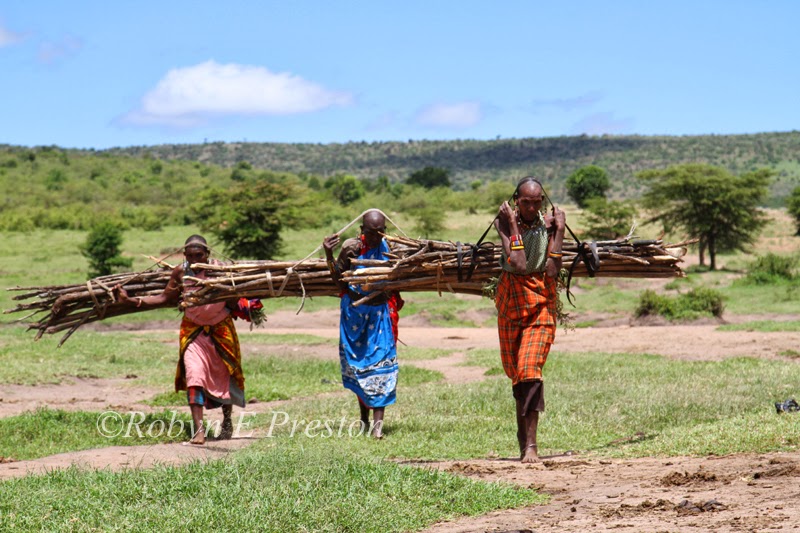
Thursday is manual labour day where we would go off into the conservancy and do such things as pull out noxious datura weeds. Most of them would come out easily, especially if they were small. Bigger plants involved more muscle. On one occasion I was so intent on what I was doing that I had wandered off and was separate from everyone else. I suddenly realised that I was a prime target if there was any predator lurking in the long grass. Our driver had driven the perimeter of the area we were clearing initially and found nothing but I still wasn’t going to take a chance and calmly walked back to the others, all the time looking around me.

Heaving rocks into potholes was another labour day task. I opted out of that exercise and in it’s place asked if I could begin the painting of the ablution block. Lincoln was only too happy to allow that and organised what I needed. It wasn’t what I would be used to back home but I made do with what I was given. And so I got stuck in and made that my free-time project. My weekends were taken up with doing something constructive instead of lying around. A new placement of volunteers came in week 5 and, between three of us we completed the whole ablution block.
In the time that I was there the volunteers changed every two weeks. They came from all walks of life, age and personality. It’s a great place to meet new people with similar interests.
Every Friday afternoon we would travel across the conservancy to Olesere Primary School where we would interact with young children. Most could speak little English. They enjoy the lessons and games we prepare for them. The class rooms are concrete floor with chunks broken out and paper rubbish littering the sides. The windows have grates. But these kids are happy for us to be there. They remember my name from one week to the next and we would have a competition to see who could remember it first. When they got it right a big, beaming smile would come across their face. There is a fair bit of cheating going on with the older ones giving answers to the younger ones but it is all in good taste. They especially enjoy the outdoor games with the boys kicking the football around on the stones. One day we are treated to a performance by them as they practice for an upcoming combined music festival. Beautiful….just beautiful. Their voices meld together and their deep red maasai clothes accent their dark skins as they dance and sing for us. Because we are indoors the sound is encompassed. What a privilege.
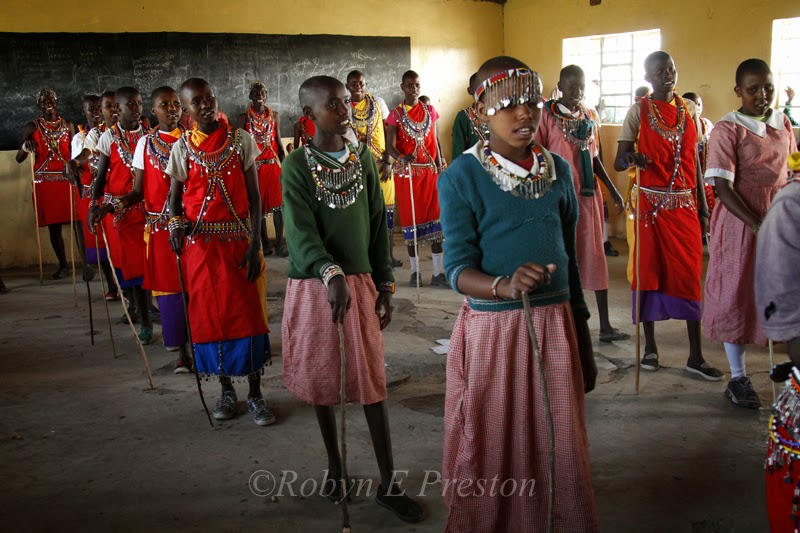
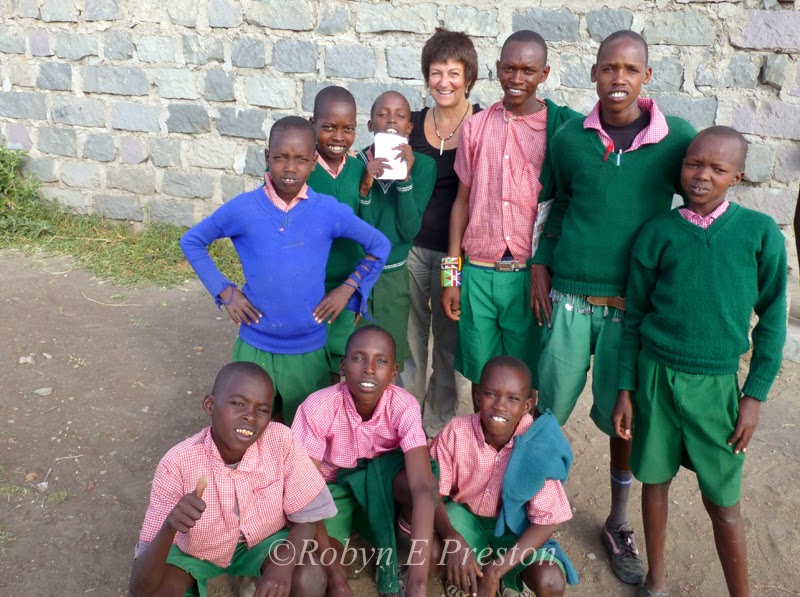
The Lion Project brings the privileges of being out with the wild animals every week day and being totally immersed in what the true African bush means. We’re in the domain of the animals and that needs to be respected. It’s back to basic stuff alright and, if you’ve not had an African experience such as this, then maybe this is a consideration. Sure, there are areas that could do with improvement but, overall, it’s an experience I hold fond memories of. I hope to visit soon and say Hi when I make my next trip back to the Mara. The graduation of the students is pending later in the year too so hopefully I can attend this once in a lifetime experience.
I wish the program well and hope that this valuable data collecting preserves the animals that need it the most and that all the animals that reside, or move through this area of the Mara, live long and undisturbed lives.
